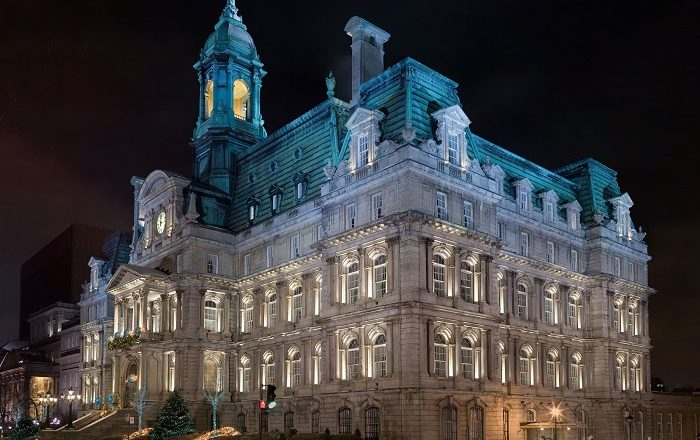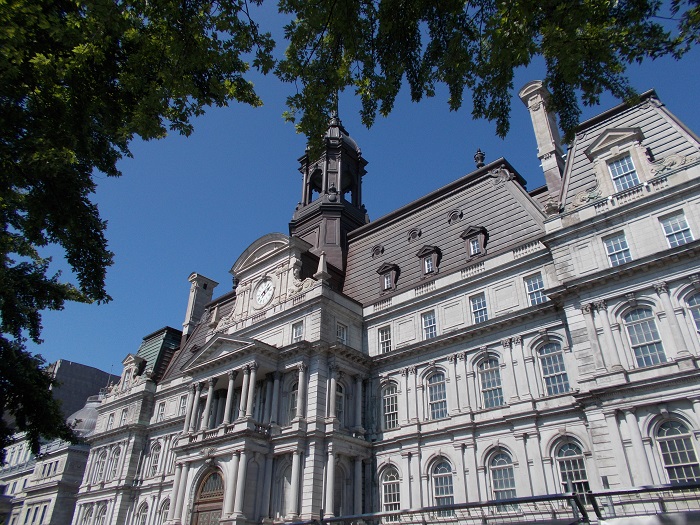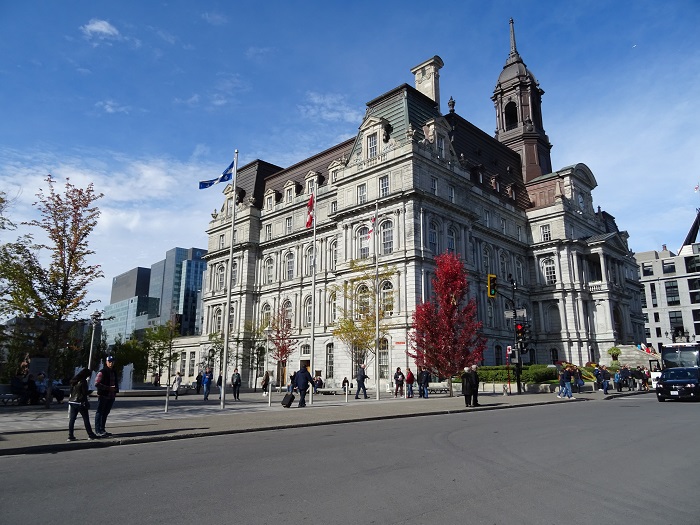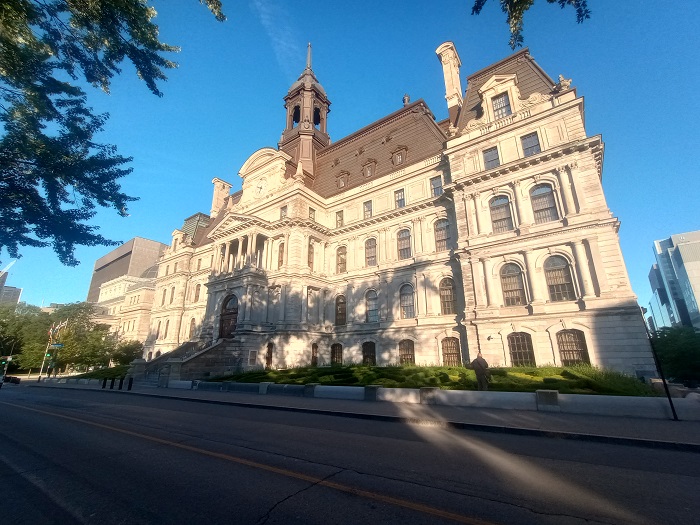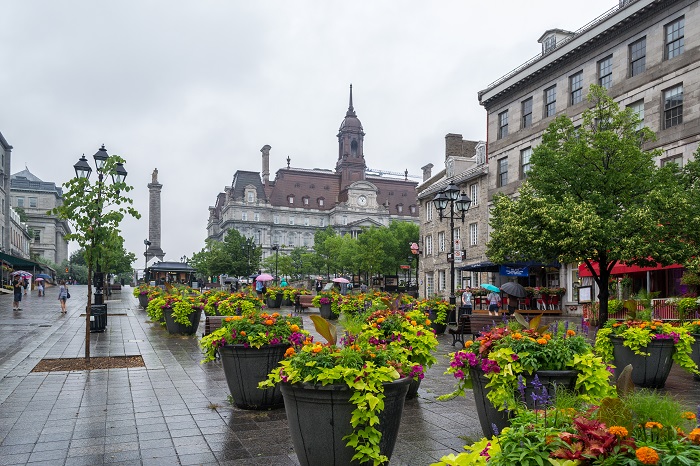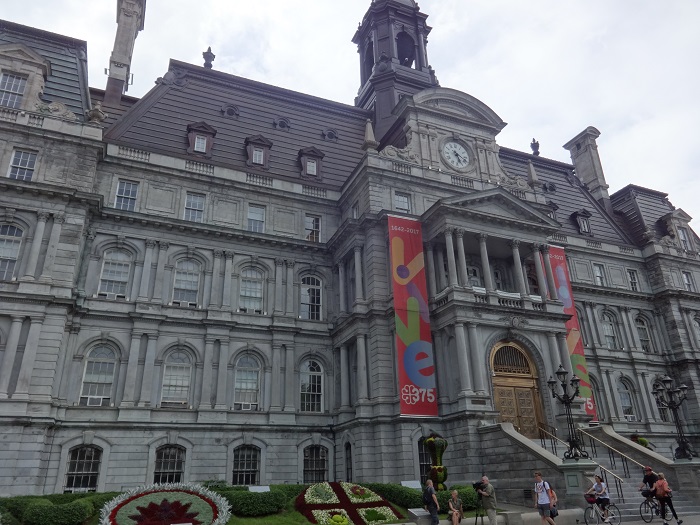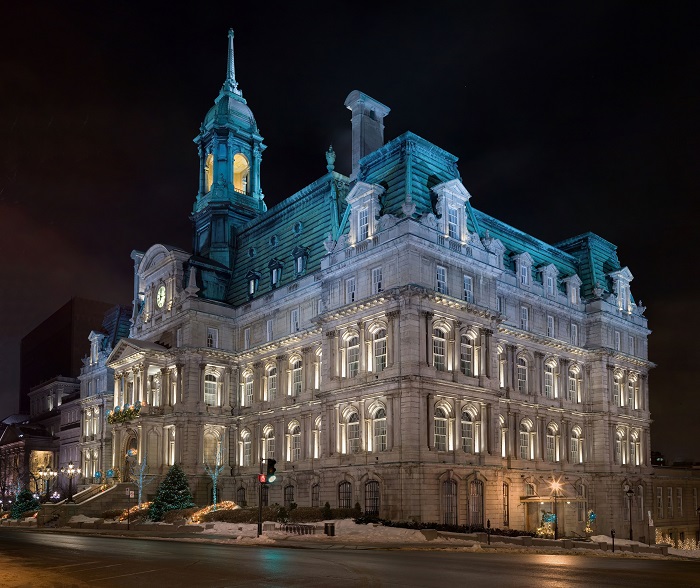Montreal City Hall is the official seat of the local government of the city of Montreal, the largest city that can be found in the southern part of the Province of Quebec, within the southeastern part of Canada. Located more precisely in the heart of Old Montreal at 275 Notre-Dame Street East, the city hall is considered to be one of the most iconic architectural and administrative landmarks in the city. Overlooking the historic Place Jacques-Cartier and close to the bustling Old Port, its central location not only makes it highly accessible but also situates it amidst a rich historical and cultural environment, reflecting the city’s French colonial heritage and modern civic identity.
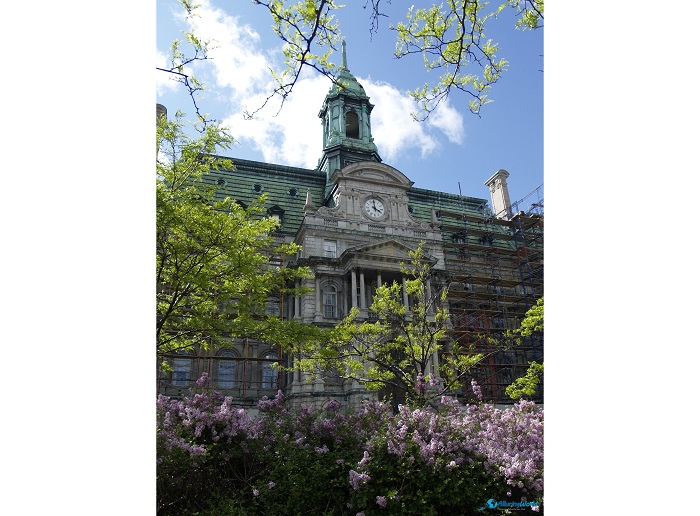
The construction of Montreal City Hall began in 1872 and was completed in 1878. As Montreal had an ongoing urban development during the 19th century, the building was commissioned by the municipal authorities to replace the older municipal offices at that time, which had become insufficient for the growing administrative needs of the city. This decision was met with positive feedback because the city emerged as a major economic and cultural hub within Canada. Local architects Henri-Maurice Perrault and Alexander Cowper Hutchison were tasked with designing a building that would embody the administrative functions of a city hall, while at the same time preserving a symbolic representation of civic pride.
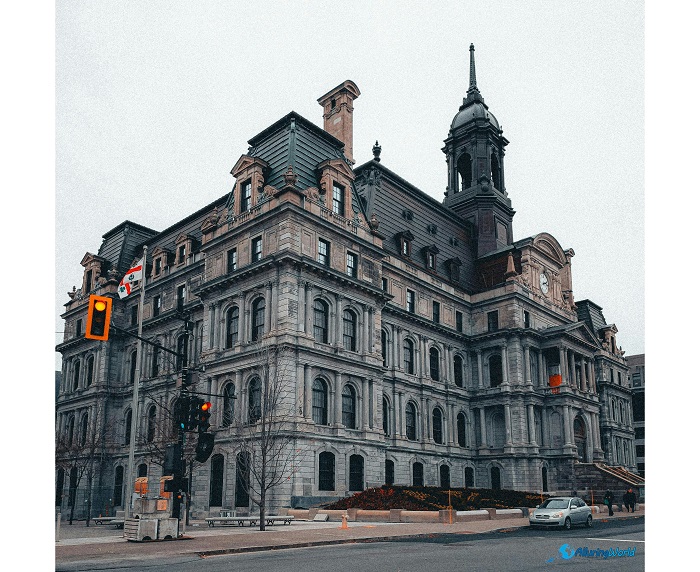
Constructed primarily in the architectural style that was popular in North America during the late 19th century, it is better known as the Second Empire. What was interesting about this style was that it had distinctive mansard roofs, very elaborate ornamentation, thus giving the structure a sense of grandeur, reflecting the ambitions of Montreal as a growing metropolis. Locally quarried grey limestone was used to construct the façade of the building, while intricate stone carvings, decorative cornices, and arched windows contribute to the overall aesthetic appeal. The highly symmetrical composition that includes ornate balconies and grand turrets at the corners of the building firmly anchor the building’s expansive form while celebrating its French architectural heritage and historical importance. As mentioned above, crowning the building is a steep, copper-finished mansard roof decorated with numerous dormers and intricate vegetal ornamentation in molded copper, which is dominated by a central, ornate thirty-foot campanile or tower, while the main entrance is defined by a projecting section featuring three large, rounded archways leading into the vestibule, flanked by pilasters and further enhancing the building’s monolithic and grandiose presence on its site overlooking Place Jacques-Cartier. Nevertheless, the interior spaces are featured with high ceilings, wood paneling, and ornate staircases, creating an environment that is considered functional for administrative purposes and impressive for ceremonial events.
ADVERTISEMENT
Throughout its history, Montreal City Hall has played a central role in the political, social, and cultural life of the city. It has housed the offices of the mayor and city council, served as the venue for official receptions, public gatherings, and key municipal decision-making processes. Maybe one of the most historically significant moments for this building occurred in 1967 when French President Charles de Gaulle delivered his famous “Vive le Québec libre” speech from the building’s balcony. This speech was a very influential one because it is seen as a declaration that had a profound impact on the province’s nationalist movement and remains a defining moment in Montreal’s history.
Over the years, the building has undergone several reconstructions and renovations to preserve its structural integrity and maintain its historical character. Due to a significant fire in 1922, unfortunately, there was a significant damage to the roof and upper floors, which led to a major restoration effort. This restorative process incorporated some modern materials and safety measures that improved the building’s condition, but at the same time retained the original architectural style. Further restorations that happened to the building have focused on façade repairs, interior refurbishments, and updates to electrical, heating, and safety systems, thus ensuring that the building will remain fully operational and accessible to the general public.
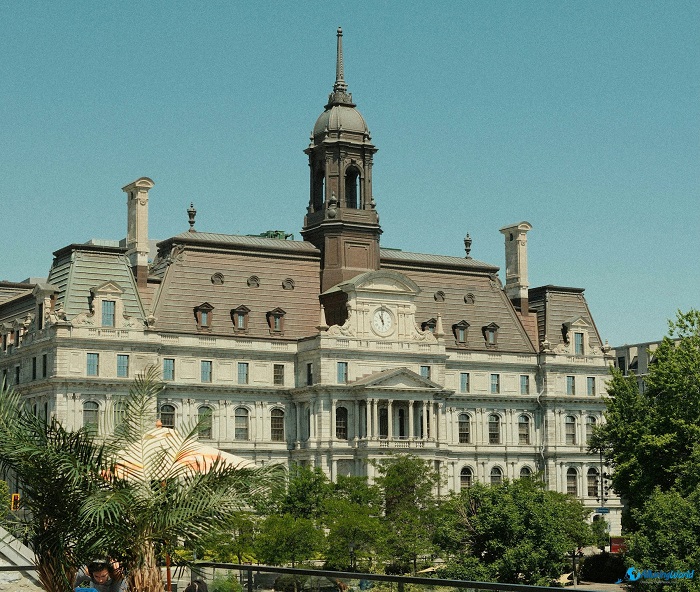
Still serving as the city’s administrative center, nowadays Montreal City Hall is also seen as a major tourist attraction where visitors can explore certain areas of the building through guided tours. These tours provide valuable insights into its history, architectural design, historical significance, and the daily workings of the municipal government. Being part of Old Montreal, it is a perfect central location that allows visitors to combine the visit with a stroll through cobblestone streets, nearby historic sites, and vibrant public squares, offering a comprehensive experience of the city’s heritage.
Overall, the importance of Montreal City Hall extends beyond its administrative functions, because it is a symbol of civic pride and architectural achievement. Since the building reflects Montreal’s history and amazing evolution from a colonial settlement to a modern urban center, its preservation as a heritage building is quite important. All of this just highlights the commitment the city has to maintaining its historical identity while accommodating contemporary urban needs. There are numerous public events, exhibitions, and occasional cultural performances that are held at or near the building, and this gives Montreal City Hall a more important role as a community focal point, linking traditions with present-day civic life.
As Montreal City Hall is very easy to visit due to its central location, the building is accessible by public transportation, including metro lines and bus routes, but most importantly, it is within walking distance of major tourist attractions in Old Montreal. It is always recommended to have guided tours for those who would like to learn more about the site’s historical and architectural significance, while casual visitors can appreciate the exterior, the impressive façade, and the surrounding public spaces. As Canada is in the Northern hemisphere, where winters can sometimes be too harsh, the best time to visit the city hall is during the warmer months from May to September. This is the period when the streets of Old Montreal are lively, people are exploring this alluring Canadian city, and guided tours are most readily available.
In conclusion, Montreal City Hall is more than just a municipal building that serves as a seat of government. It is a historical and architectural landmark that encapsulates the city’s growth, heritage, and civic identity, so starting from its inception in the late 19th century to its role in contemporary municipal governance, it has remained a symbol of Montreal’s ambition, resilience, and cultural richness.
Its combination of Second Empire architectural elegance, historical significance, and accessibility makes it a must-visit destination for tourists, history enthusiasts, and residents alike. You should definitely plan your visit to Montreal to see this majestic structure because by preserving and celebrating this iconic building, Montreal ensures that its heritage will continue to inspire and inform future generations, perhaps inspire architects to create similar masterpieces. Simply put, Montreal City Hall offers an enduring connection to the city’s past while remaining integral to its present-day civic life.

